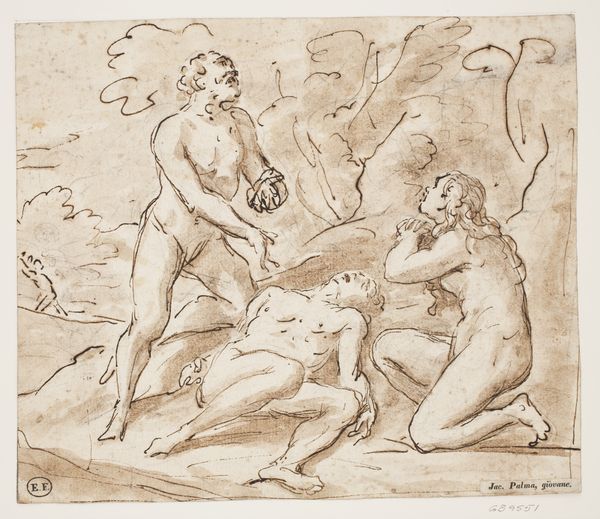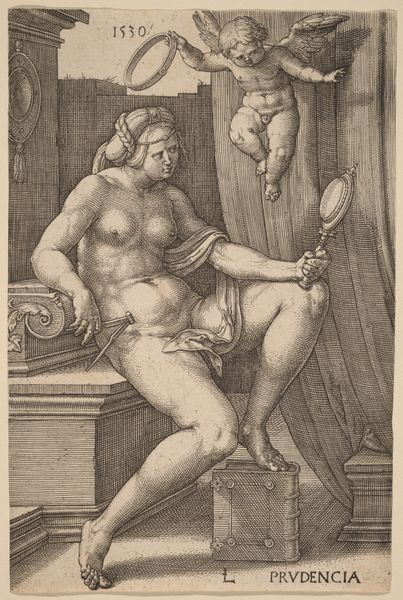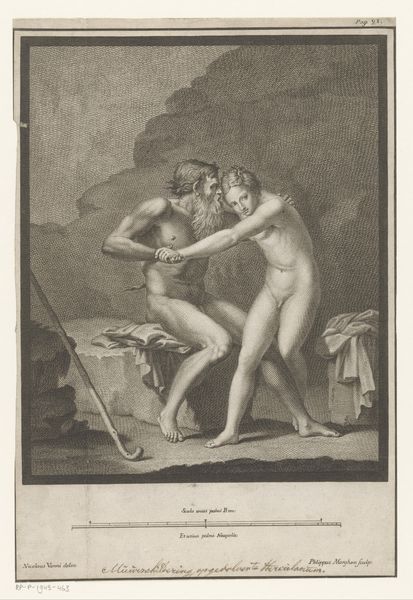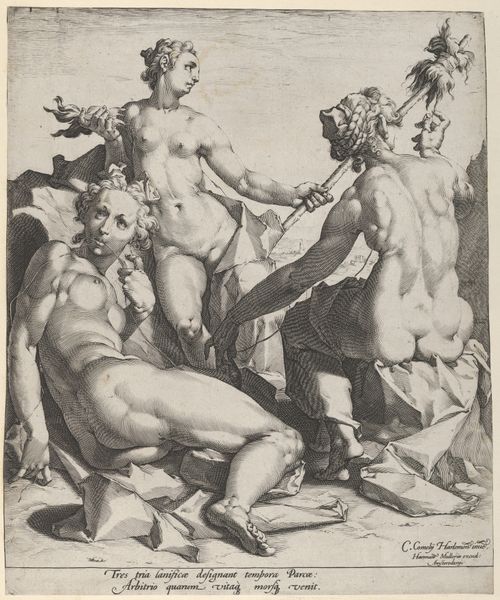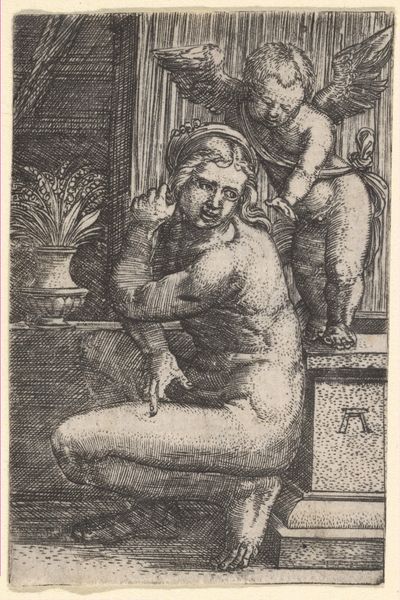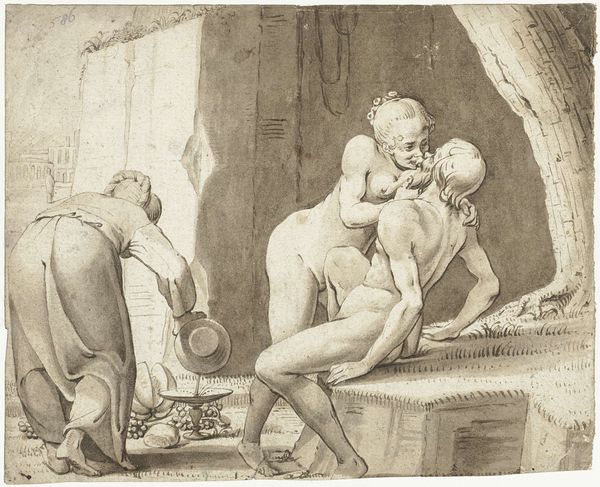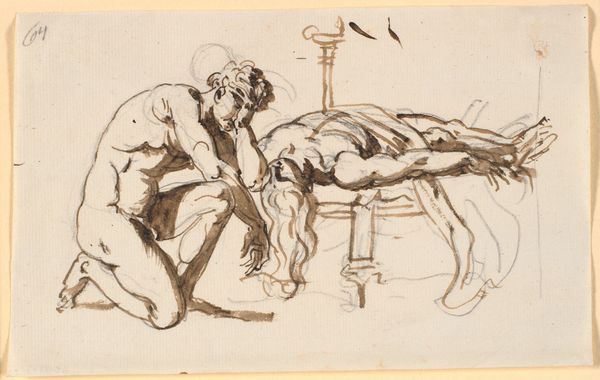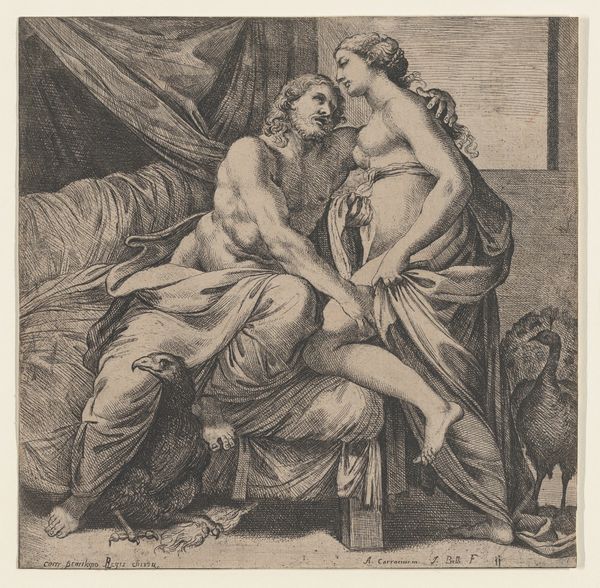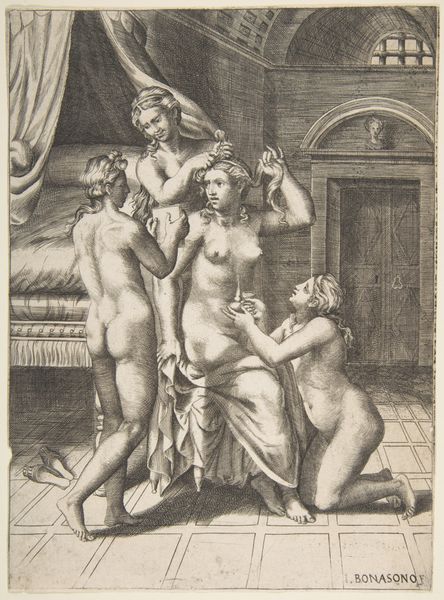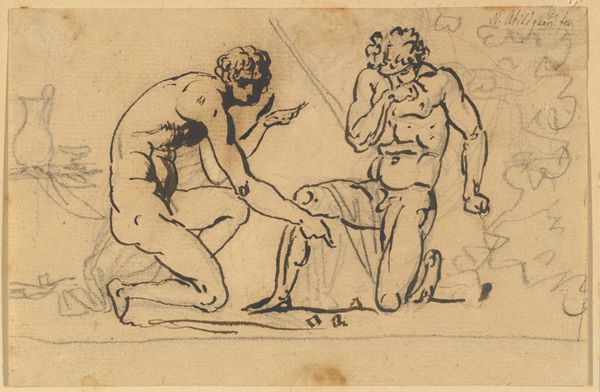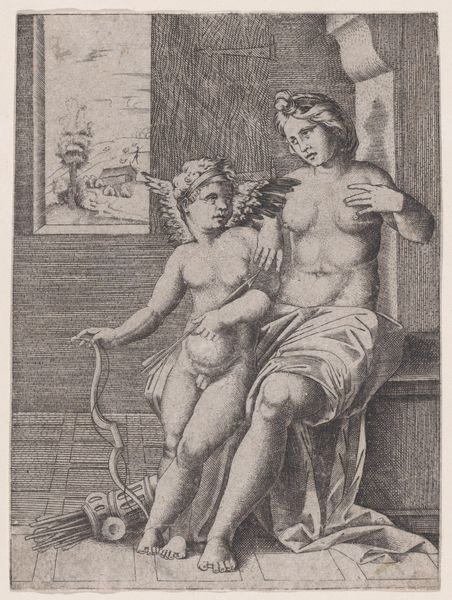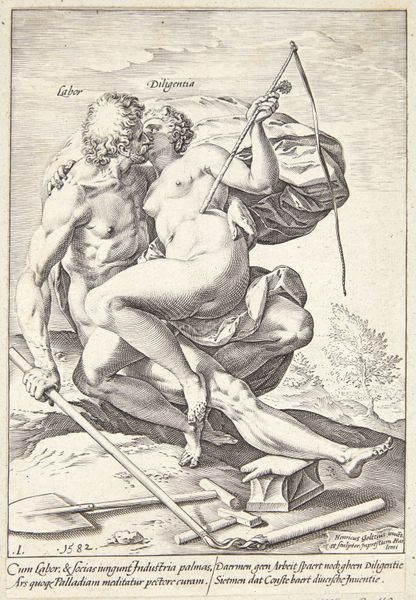
En nøgen mand, der omskærer en anden nøgen mand, eller: Uranos der gildes af Kronos? 1743 - 1809
0:00
0:00
drawing, ink
#
drawing
#
ink drawing
#
caricature
#
figuration
#
ink
#
genre-painting
#
history-painting
#
academic-art
Dimensions: 186 mm (height) x 212 mm (width) (bladmaal)
Curator: Here we have a fascinating drawing by Nicolai Abildgaard, created sometime between 1743 and 1809. The work is aptly named "En nøgen mand, der omskærer en anden nøgen mand, eller: Uranos der gildes af Kronos?" which translates to "A naked man circumcising another naked man, or: Uranus being castrated by Cronus?". It's an ink drawing currently held at the SMK, the National Gallery of Denmark. Editor: My initial reaction? It's…visceral. The ink strokes feel almost violent, emphasizing the act being depicted. You can almost feel the tension, the struggle represented. There's also a starkness to the brown ink on paper, lending an unsettling, surgical quality. Curator: Indeed. Abildgaard delves into the ancient myth of Uranus' castration by his son Cronus, a pivotal moment symbolizing the shift of power in Greek mythology. Uranus, representing the sky, was overthrown, birthing a new cosmic order. The image encapsulates a primordial battle, echoing themes of power, rebellion, and generational conflict. The artist subtly explores archetypal father-son tensions through the use of dark, dramatic ink washes, reminiscent of a history painting despite its small scale. Editor: But it’s also about the material consequences of this struggle, isn't it? Look at the rendering of flesh, the active participation in a physically laborious scene. Abildgaard has used simple brown ink on paper, a readily available material, yet it evokes raw emotion. Is it the economical, even mundane means that helps bring focus on this act of crude power? The method mimics the historical and physical act—unrefined. Curator: Precisely. The economical choice of material sharpens the focus on the myth’s inherent symbolism. One sees not only the immediate struggle, but it makes one ponder the transgressive action itself – the generational overthrow—as echoed within history and cultural memory. We also might pause to recognize our own complicity in it as viewers, invited to watch a transgression through what seems a commonplace technique like drawing. Editor: A fair point. And looking closely, notice how the texture of the ink on paper creates a feeling of…unease, or an unrefined act captured mid-action. Abildgaard pushes the capabilities of simple materials to create something quite jarring. It shows, for me, how even accessible materials wield complex cultural power in skillful hands. Curator: Absolutely. The image persists in leaving us contemplating its violent story and the cultural memory that follows. It forces one to wrestle with a visceral primal mythology within our cultural history. Editor: I’m struck by how relevant the materials render what happened within the lines; together they are a clear reminder about power, conflict, and the cyclical nature of history.
Comments
No comments
Be the first to comment and join the conversation on the ultimate creative platform.
